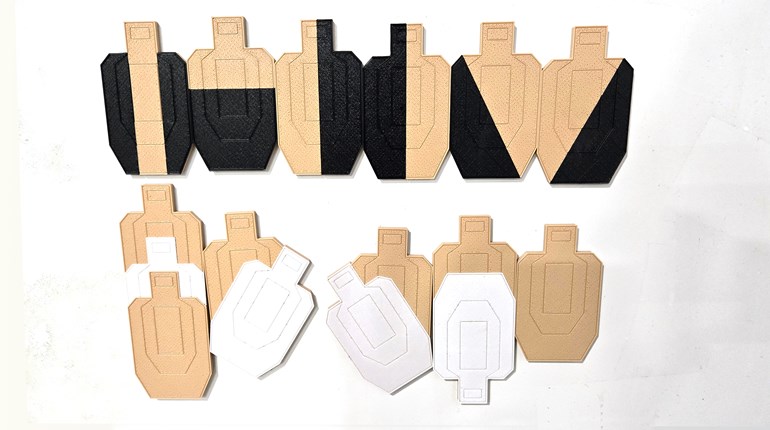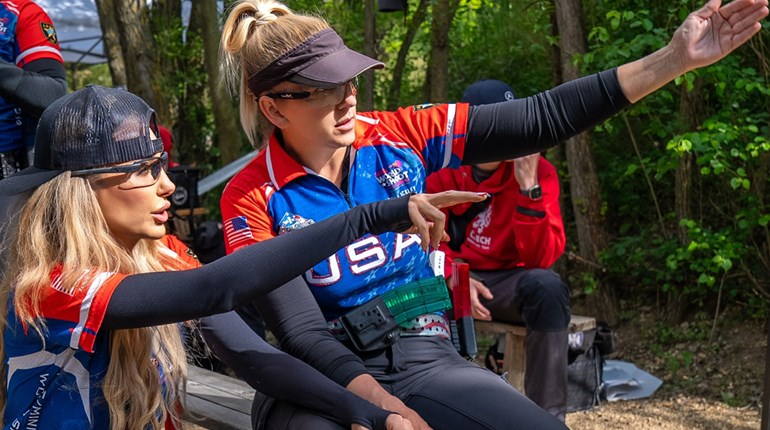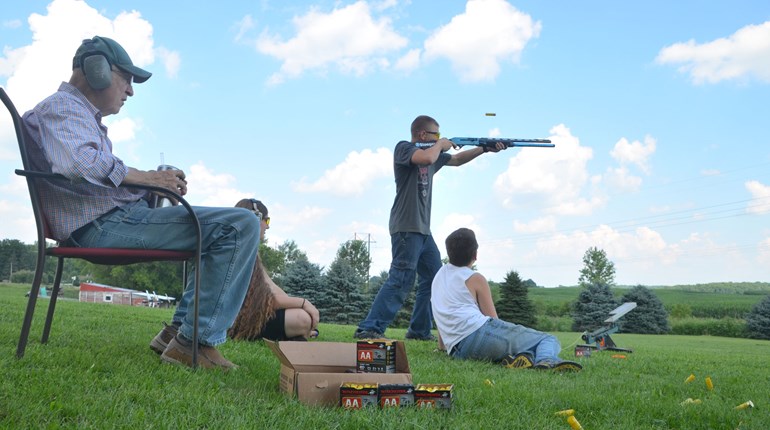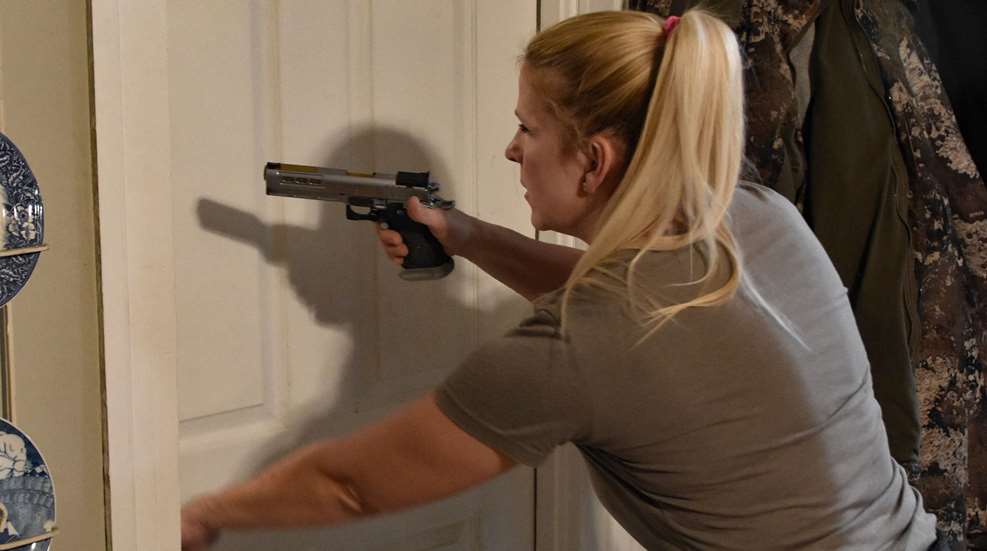
Most target practice designed to improve marksmanship is performed standing still on a single lane at a range. This is primarily because most ranges have rules regarding movement with firearms. Many do not allow it, and most require that you shoot only from the lane you are using. This is for your safety and the safety of others. Nonetheless, every gun owner should understand basic concepts on moving with a gun, and how to safely move with a firearm, particularly if you are thinking about entering the world of competitive shooting.
So if you aren't able learn these skills at a range during standard target practice, how do you learn them? As with many shooting sports endeavors, it begins with the basics and, ultimately, a lot of dry practice.
Movement with a gun, whether on or off the range, needs to be done while integrating the three rules of firearms safety. The most important thing to remember while moving with a firearm is to keep your finger off the trigger. This is the ultimate way to prevent a gun from firing.
Next, you also must pay particular attention to where your muzzle is pointing when other people are nearby. Even when you are the only one on the range, you must still consider where the muzzle is pointed in relation to yourself. You wouldn’t flag (point your muzzle at) another person, and you don’t want to flag yourself either. When you draw, holster and move, start slowly and build your skills safely.
To help foster this practice, you should become familiar with the “180.” This concept practiced in competitive shooting is where shooters are aware of an imaginary 180-degree line (from one side to the other, facing downrange) that their guns' muzzles cannot pass. Competitors are not permitted to turn their guns past that 180-degree plane. Similarly, some ranges don’t allow shooters to raise the muzzle of their guns over the backstop or berm (for indoor ranges, this means walls and ceilings). So keep the 180 in mind!
Dry Practice
To master moving with a gun, dry practice at home—intentionally dry firing your gun in order to develop muscle memory—is invaluable. Before you begin, confirm that your gun is empty and all ammo has been cleared from the area.
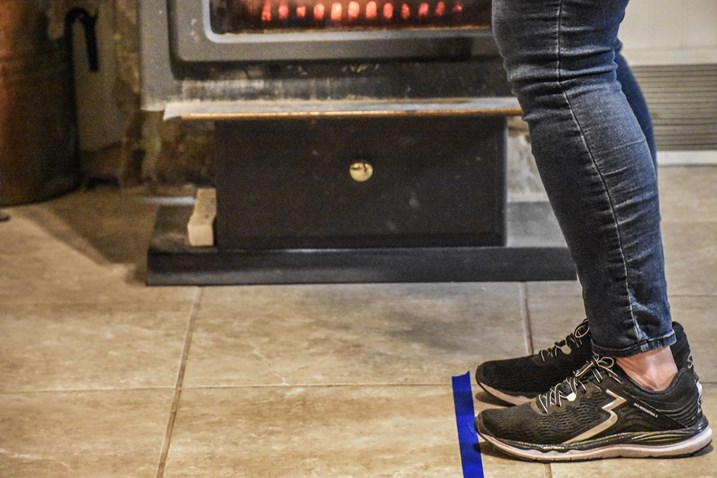
Start With Your Draw
In competition, shooters are sometimes required to have their toes or heels touching a mark when they draw. This type of start can easily be practiced at home, with your first action to be moving a foot to establish your stance.
Sometimes shooters are required to start by drawing after turning. For example, a competitor may be facing uprange, with her back to the targets or sideways toward the berm or wall. To do this safely, the shooter must turn first and then draw. There are a few things to keep in mind for draws that require turning:
As you practice this with dry fire, determine if it's easier to turn one direction or another. In theory, a right-handed shooter would turn to the right, and a left-handed shooter to the left, because the side of your body holding the gun will “lead” the turn and be positioned sooner for you to draw. Exceptions would be if you are required to turn a specific direction, face a particular direction, or if the stage layout dictates your turn.
At this point, focus on something about as far away as the targets are from you, but not the actual targets. This way, when you turn, your eyes will not be trying to adjust to focus on the bullseye.
Stay level, and don’t introduce up or down motion. If you are low, stay low, because it takes time to move up or down as you complete your turn.

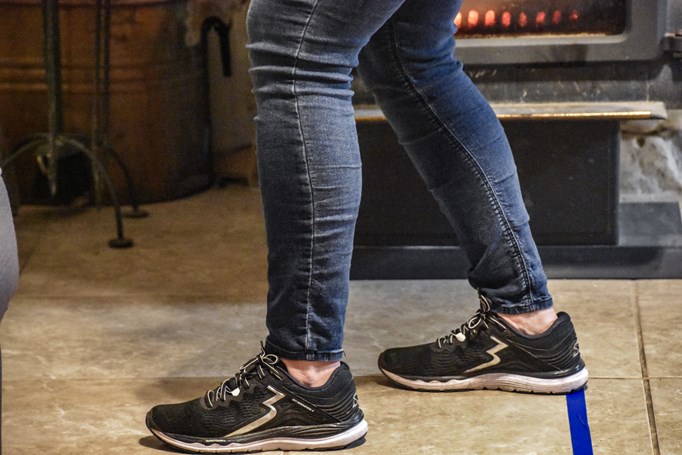
Minutiae of Movement 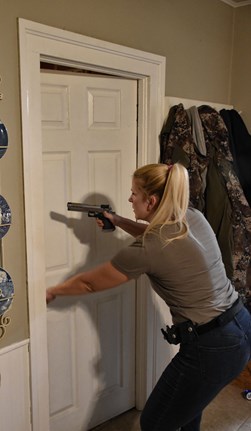
Moving in competition can be broken down into several components. Which foot to lift first, how to turn your body before moving, how to stay oriented downrange, and where to place your weight are just a few aspects that can get very technical. However, start by practicing these movements on their own with dry fire:
- Draw from “heels touching” (inside fault lines) and “toes touching” (outside fault lines)
- Draw from facing uprange
- Draw and open a door without flagging yourself (this is a frequent start in competition)
- Move backward and forward
- Move from right to left and left to right (Be aware of the muzzle direction and determine which direction is easiest for your dominant hand. Usually it’s easier for right-handed shooters to move right to left and vice versa. This is because magazine changes going the opposite way are more likely to break the "180")
Sight Alignment
I covered one aspect of moving with a gun in Dry Fire Drills for Accurate Aim: movement within your body. This can happen during a draw, magazine change or movement. Moving up and down as you perform a task will add time. Eliminate unnecessary movement to improve your time and efficiency. When you enter or exit a shooting position, your goal should be to keep a somewhat low or aggressive stance. That will save you the time that you would waste rising up or lowering down.
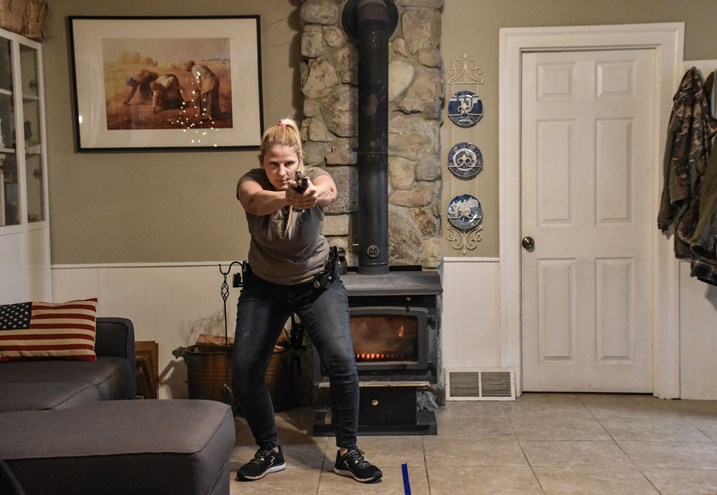
When you leave a shooting position, you want to look for your next position and then move toward it. As you approach the new position, get your eyes up and on the target so that as you raise your gun and start lining up the sights, you can shoot as soon as you are in position. In competition this is often referred to as “breaking down.” You want to break down soon enough that you can get the gun up and sights onto the target before you are fully stopped.
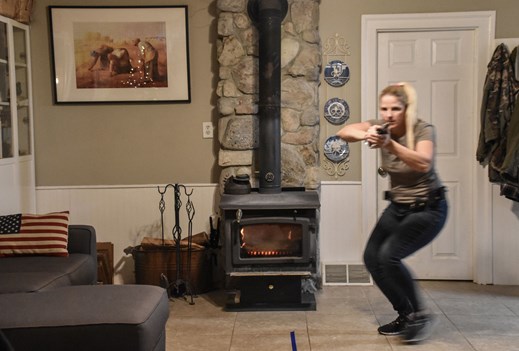
To keep your inner movements to a minimum during dry practice, start by moving from one position to another with an empty gun. You can use a line on your floor or the edge of the carpet to judge your positioning. Start from dry firing on a “target,” and then take your finger off the trigger and start moving to your new spot. Focus on keeping the gun downrange and looking for your position. As you get a few steps from your new position, start to bring the gun up and begin to align the sights so that you are ready to shoot as soon as you are in position. Start slow and build repetitions before you go quickly.
Practicing simple movements with dry fire will help you to become more comfortable with your gun and better able to take in your surroundings once you start training at the range. Processing your movement, sights and keeping track of what targets to shoot from where are all mental operations that you have to juggle on the clock in competition. It might seem a little overwhelming at first, but dry practice pays off in big dividends when you don’t have frequent access to a range.
About the Author: Becky Yackley competes in the shooting sports across the country and around the world with her husband and three sons. She has spent much of the last 20 years holding down the fort while her husband proudly serves our country in both the Marine Corps and state law enforcement. Her writing, blogging, and photography are ways that she shares her unique perspective on firearms, competition, hunting, and the Second Amendment, especially as it applies to mothers on their own. She grew up the daughter of a gunsmith, and with her siblings competed in NRA Highpower and Smallbore, and she has since competed in more disciplines than almost any woman involved in the shooting sports. From IPSC, USPSA, Bianchi Cup, 3 Gun and more, she enjoys sharing that to be proficient and knowledgeable with a firearm is within the reach of anyone! She’s the founder a 501c.3, 2A Heritage Ltd., and works with industry partners and other volunteers who share the ethos of bringing new youth into the shooting sports with personal commitment to safely sharing an historically American pastime.












